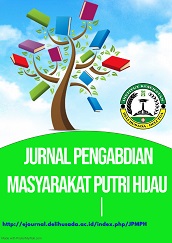EDUKASI PENGGUNAAN ANTIBIOTIK PADA SISWA/SISWI SMA NEGERI 1 STM HILIR, JLN. PENDIDIKAN DUSUN I TALUN KENAS, KEC. SINEMBAH TANJUNG MUDA HILIR, KAB. DELI SERDANG, SUMATERA UTARA
Abstract
Overuse of antibiotics has the potentiall for irrational use. This is one of the factorss that cause resistances. WHO in the field of antimicrobial resistance:According to the Global Surveillance Report, Southeast Asia has the highest level of antimicrobial resistance in the world, especially against methicillin-resistant Staphylococcus aureus (Ministry of Health, 2015). Results of the AMRIN (Antimicrobial Resistance in Indonesia) study conducted from 2000 to 2005 showed that approximately 43% of E. coli are resistant to various types of antibiotics, including:
ampicillin (34%), co-trimoxazole (29%), chloramphenicol (25%) (Minister of Health of the Republic, 2015). Irrational use is a major factor in high antibiotic resistance rates. Lack off publicc knowledges about antibiotics can affect attitudes and healths behaviorss, including irrationall use of antibiotics. Knowledge plays an important rolee in shaping beliefs and attitudess about certain behaviors, such as behavior when taking antibioticss. Education level is thought to have a significant impact on this behavior (Ivoryanto, 2017).
Keywords : antibiotics, resistance, student












